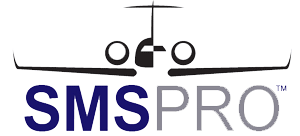
Aviation safety hinges on proactive risk management, and Safety Management Systems (SMS) provide the framework to achieve this. Within the aviation SMS ecosystem, two voluntary programs—Flight Operational Quality Assurance (FOQA) and Aviation Safety Action Program (ASAP)—play pivotal roles in enhancing safety.
These programs, widely adopted in the U.S. under the Federal Aviation Administration (FAA) and aligned with global standards like those of the International Civil Aviation Organization (ICAO), offer unique approaches to hazard identification and risk mitigation.
This guide is tailored for aviation safety managers and accountable executives, comparing FOQA and ASAP, their integration with aviation SMS, and their impact on safety culture. By understanding their differences, synergies, and practical applications, professionals can leverage these programs to build a robust SMS that ensures compliance and drives continuous safety improvement. Whether you oversee a regional airline or a global aviation operation, this article provides actionable insights to enhance your safety strategy.
Section 1: Understanding FOQA
What is FOQA?
Flight Operational Quality Assurance (FOQA), also known as Flight Data Monitoring (FDM) in Europe, is a voluntary program that collects and analyzes flight data to identify operational risks and trends. FOQA uses data from aircraft systems, such as Quick Access Recorders (QARs) or Flight Data Recorders (FDRs), to monitor parameters like altitude, speed, and control inputs. The FAA provides guidance on FOQA through Advisory Circular AC 120-82, emphasizing its role in improving safety and operational efficiency.
Key Features of FOQA
-
Data-Driven: FOQA collects objective, de-identified flight data, typically from thousands of flights, to identify systemic issues.
-
Proactive: It detects trends, such as unstable approaches or excessive descent rates, before they result in incidents.
-
Scope: Primarily focuses on flight operations, including pilot performance, aircraft systems, and environmental factors.
-
Confidentiality: Data is aggregated and de-identified to protect crews and encourage participation.
-
Implementation: Requires investment in data collection systems, analysis software, and trained personnel.
FOQA Process
-
Data Collection: Flight data is recorded during routine operations and downloaded for analysis.
-
Data Analysis: Analysts use software to identify exceedances (e.g., deviations from standard procedures) and trends.
-
Risk Assessment: Identified issues are evaluated for severity and likelihood.
-
Corrective Actions: Findings inform training, procedure changes, or operational adjustments.
-
Feedback: Results are shared with stakeholders to improve safety practices.
Benefits of FOQA
-
Identifies operational risks, such as runway excursions or hard landings, through data trends.
-
Enhances pilot training by pinpointing areas for improvement.
-
Supports compliance with SMS requirements for hazard identification and safety assurance.
-
Improves fuel efficiency and maintenance by identifying suboptimal practices.
Challenges
-
High costs for equipment, software, and trained analysts.
-
Requires robust data management to ensure confidentiality and compliance with privacy regulations.
-
Limited to flight operations, excluding non-flight-related hazards.
Section 2: Understanding ASAP
What is ASAP?
The Aviation Safety Action Program (ASAP) is a voluntary, non-punitive reporting program that encourages employees—pilots, mechanics, dispatchers, and others—to report safety issues without fear of disciplinary action. Governed by FAA Advisory Circular AC 120-66B, ASAP fosters a collaborative safety culture by protecting reporters’ identities and focusing on corrective actions rather than blame. SMS Pro supports ASAP processes.
Key Features of ASAP
-
Employee-Driven: Relies on voluntary reports from frontline personnel about safety concerns or incidents.
-
Non-Punitive: Offers protections against disciplinary action for most reported issues, except intentional violations or criminal acts.
-
Scope: Covers a broad range of safety issues, including human factors, maintenance errors, and procedural deviations.
-
Event Review Committee (ERC): A joint committee (operator, FAA, and often union representatives) reviews reports, determines root causes, and recommends solutions.
-
Confidentiality: Reports are de-identified to protect reporters, with limited exceptions (e.g., willful misconduct). SMS Pro uses a Secure Workflow Manager and version control to deidentify reports before releasing reported issues to the ERC.
ASAP Process
-
Report Submission: Employees submit safety reports through a designated system, detailing incidents or concerns.
-
Review: The ERC evaluates reports to determine if they meet ASAP criteria (e.g., unintentional errors).
-
Analysis: Root causes are identified, often using tools like the 5 Whys or Fishbone diagrams.
-
Corrective Actions: Solutions, such as training or policy changes, are implemented to address issues.
-
Feedback: Reporters receive feedback, and lessons learned are shared to improve safety.
Benefits of ASAP
-
Encourages open reporting, uncovering safety issues that might otherwise go unreported.
-
Addresses human factors, such as fatigue or miscommunication, critical to safety.
-
Strengthens safety culture by fostering trust between employees and management.
-
Supports SMS by providing qualitative data for hazard identification and safety assurance.
Challenges
-
Requires a strong safety culture to ensure employees trust the non-punitive process.
-
Dependent on employee participation, which can vary based on organizational trust.
-
Managing ERC processes and ensuring timely resolutions can be resource-intensive.
Section 3: FOQA and ASAP in the Context of SMS
What is an SMS?
A Safety Management System (SMS) is a structured top-down approach to managing safety risks, mandated by ICAO (Annex 19), FAA (14 CFR Part 5), and EASA (EASA SMS Rules). It comprises four components:
-
Safety Policy: Commitment to safety and defined objectives.
-
Safety Risk Management (SRM): Hazard identification, risk assessment, and mitigation.
-
Safety Assurance (SA): Monitoring and evaluating safety performance.
-
Safety Promotion: Training and communication to foster a safety culture.
FOQA and ASAP directly support SRM and SA, providing data to identify hazards, assess risks, and monitor safety performance. They also contribute to safety promotion by enhancing training and communication.
FOQA’s Role in SMS
-
Hazard Identification (SRM): FOQA’s flight data analysis identifies operational hazards, such as recurring exceedances (e.g., high approach speeds).
-
Risk Assessment (SRM): Data trends help prioritize risks based on frequency and severity.
-
Safety Assurance (SA): FOQA monitors the effectiveness of corrective actions, such as changes to standard operating procedures (SOPs).
-
Safety Promotion: Insights from FOQA inform training programs, improving pilot and crew performance.
ASAP’s Role in SMS
-
Hazard Identification (SRM): ASAP reports uncover human factors, procedural issues, or environmental hazards (e.g., unclear checklists or runway incursions).
-
Risk Assessment (SRM): The ERC evaluates reported issues to determine their impact and likelihood.
-
Safety Assurance (SA): ASAP tracks the implementation of corrective actions and monitors recurring issues.
-
Safety Promotion: Non-punitive reporting fosters a positive safety culture, encouraging continuous improvement.
Integration with SMS
-
Data Synergy: FOQA provides quantitative data (e.g., flight parameters), while ASAP offers qualitative insights (e.g., crew observations). Combining these enhances hazard identification and risk analysis.
-
Continuous Improvement: Both programs feed into SMS’s feedback loop, informing audits, training, and policy updates.
-
Regulatory Alignment: FOQA and ASAP align with ICAO’s Annex 19, FAA’s Part 5, and EASA’s integrated management system, ensuring compliance.
-
Scalability: Small operators can implement simplified versions of FOQA (e.g., manual data analysis) and ASAP (e.g., basic reporting systems) to meet SMS requirements.
Section 4: Comparing FOQA and ASAP
Key Differences
|
Aspect |
FOQA |
ASAP |
|---|---|---|
|
Data Source |
Objective flight data from aircraft systems (QARs, FDRs). |
Subjective employee reports (pilots, mechanics, etc.). |
|
Focus |
Operational risks (e.g., unstable approaches, system performance). |
Human factors, procedural errors, and safety concerns. |
|
Methodology |
Quantitative analysis of aggregated, de-identified data. |
Qualitative review of individual reports by the ERC. |
|
Scope |
Limited to flight operations. |
Broad, covering all aviation activities (flight, maintenance, dispatch). |
|
Participation |
Automatic (data collected during flights). |
Voluntary (depends on employee reporting). |
|
Confidentiality |
Fully de-identified, no individual attribution. |
De-identified, with protections against punitive action (except willful misconduct). |
|
Resource Needs |
High (data systems, software, analysts). |
Moderate (reporting system, ERC management). |
|
Output |
Trends and systemic issues. |
Specific incidents and corrective actions. |
Synergies
-
Complementary Data: FOQA identifies trends (e.g., frequent hard landings), while ASAP provides context (e.g., pilot reports of unclear procedures). Together, they offer a holistic view of safety risks.
-
Enhanced Risk Management: Combining FOQA’s quantitative data with ASAP’s qualitative insights improves risk assessment accuracy.
-
Safety Culture: FOQA’s objectivity and ASAP’s non-punitive approach reinforce trust, encouraging proactive safety behaviors.
-
SMS Integration: Both programs feed into SRM and SA, supporting data-driven decision-making and continuous improvement.
Case Example
An airline notices a trend of unstable approaches in FOQA data. ASAP reports reveal pilots are unclear about new approach procedures due to inadequate training. The SMS integrates these findings: SRM identifies the hazard (unstable approaches) and assesses risks, SA monitors training improvements, and safety promotion updates training programs, reducing the issue.
Section 5: Practical Steps for Safety Managers
To maximize the benefits of FOQA and ASAP within SMS, aviation safety managers can follow these steps:
-
Implement FOQA:
-
Invest in flight data collection systems (e.g., QARs) and analysis software.
-
Train analysts to interpret data and identify trends.
-
Use FOQA findings to update SOPs, training, and maintenance practices.
-
Ensure data confidentiality to maintain crew trust (FAA AC 120-82).
-
-
Establish ASAP:
-
Develop a clear ASAP policy with non-punitive protections, approved by the FAA.
-
Form an ERC with representatives from management, unions, and the FAA.
-
Create an accessible reporting system (e.g., online SMS Pro portal) and promote it to employees.
-
Act on ASAP reports promptly to build trust (FAA AC 120-66B).
-
-
Integrate with SMS:
-
Use FOQA and ASAP data to populate SRM processes, identifying and prioritizing hazards.
-
Incorporate findings into SA audits and performance monitoring.
-
Share lessons learned through safety promotion activities, such as newsletters or training sessions.
-
-
Foster a Safety Culture:
-
Communicate the non-punitive nature of ASAP to encourage reporting.
-
Use FOQA’s objective data to reinforce that safety improvements are system-focused, not individual-focused.
-
Engage senior management to champion both programs, aligning with SMS policy.
-
-
Scale for Your Organization:
-
For small operators, start with basic FOQA (e.g., manual data reviews) and a simple ASAP reporting system.
-
For large operators, invest in advanced analytics for FOQA and streamlined ERC processes for ASAP.
-
Challenges to Address
-
Resource Constraints: Small operators may struggle with FOQA’s costs or ASAP’s administrative demands. Seek FAA guidance for scalable solutions (FAA SMSVP).
-
Cultural Barriers: Employees may hesitate to report via ASAP if trust is lacking. Build trust through transparent communication and consistent non-punitive actions.
-
Data Integration: Combining FOQA and ASAP data requires robust systems. Use SMS software to aggregate and analyze data effectively.
Section 6: Regulatory Context and Global Alignment
FAA and ICAO
-
FAA: FOQA and ASAP are voluntary programs under FAA oversight, aligning with 14 CFR Part 5 SMS requirements for part 121 carriers. They support the FAA’s Safety Management System Voluntary Program (SMSVP) for other sectors (FAA SMSVP).
-
ICAO: FOQA and ASAP align with Annex 19, supporting SRM and SA. ICAO’s Safety Management Manual (SMM) encourages data-driven safety programs like FOQA and voluntary reporting like ASAP.
EASA
In Europe, EASA’s Flight Data Monitoring (FDM) is similar to FOQA, mandated for commercial air transport operators under Regulation (EU) No 965/2012. Voluntary reporting systems, akin to ASAP, are encouraged within EASA’s SMS framework (EASA SMS Rules). Safety managers operating in Europe can adapt FOQA and ASAP principles to meet EASA’s integrated management system requirements.
International Operations
For operators crossing jurisdictions, aligning FOQA and ASAP with ICAO’s framework ensures compatibility with FAA and EASA standards. This is critical for airlines operating transatlantic routes, where both FAA and EASA regulations apply.
Conclusion
FOQA and ASAP are powerful tools for enhancing aviation safety, each offering unique strengths within the SMS framework. FOQA’s data-driven analysis uncovers operational risks, while ASAP’s voluntary reporting addresses human factors and procedural issues. By integrating both with SMS, aviation safety managers can achieve comprehensive hazard identification, robust risk management, and a strong safety culture.
For safety managers and accountable executives, the key is to implement FOQA and ASAP strategically, tailoring them to your organization’s size and needs. By leveraging their synergies and aligning with ICAO, FAA, and EASA standards, you can ensure compliance, mitigate risks, and drive continuous safety improvements. In an industry where safety is non-negotiable, FOQA and ASAP are indispensable allies in building a safer future for aviation.
Key Citations:
- FAA Advisory Circular AC 120-82: Flight Operational Quality Assurance
- FAA Advisory Circular AC 120-66B: Aviation Safety Action Program
- ICAO Annex 19: Safety Management
- FAA 14 CFR Part 5: Safety Management Systems
- EASA Safety Management System Rules
- ICAO Safety Management Manual (SMM), 4th Edition
- FAA Safety Management System Voluntary Program
- EASA Regulation (EU) No 965/2012: Air Operations





